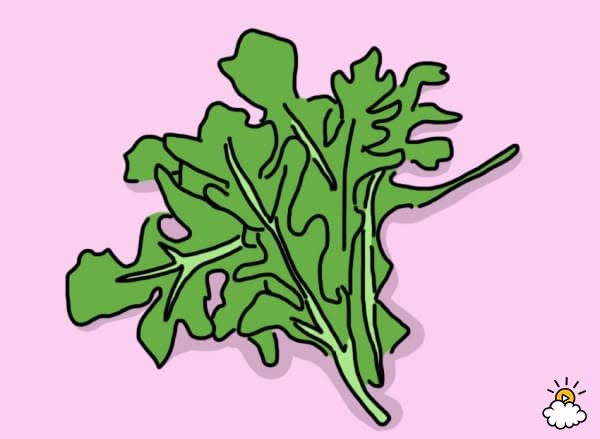These 9 seasonal produce items are packed with essential vitamins
It's spring! That means that the days are longer and warmer, and everywhere, the year's new plants are beginning to peek out from under the soil.
In the old days, that meant that living off last fall's rations of stored food was also over for the year, and fresh, juicy, and nutritious fruits and vegetables were ready to be enjoyed again.
Today, we aren't always quite as beholden to the seasons when it comes to food, but it still affects us more than we might realize.
This spring, why not check out some of the year's new produce popping up at your local grocery stores and farmers' markets and really get a taste of the season?
And not only are these spring treats delicious, they're also packed with vitamins and minerals that provide your body with all kinds of benefits. They're also great for taking on the go, like maybe in a perfectly portable mason jar salad, so you can enjoy spring anywhere.
Check out some of the things you'll be able to find on shelves and in markets this spring, and if you've never tried them before, give them a shot! You might be pleasantly surprised.
Asparagus

Maya Borenstein for LittleThings
Asparagus is full of vitamins, including vitamins C, E, and K, as well as minerals like zinc, copper, manganese, and selenium.
It's also a great antioxidant and anti-inflammatory, and has been shown to be beneficial for digestive and heart health. It's also been enjoyed around the world for 2,000 years!
Check out this savory appetizer recipe that uses asparagus!
Strawberries

Maya Borenstein for LittleThings
Strawberries are full of vitamin C and antioxidants, and because they're so high in these, they're excellent for heart health.
They've also been shown, when eaten daily, to lower cholesterol and prevent high blood pressure.
Cultivation of wild strawberries into the berries we love today began in the 18th century, and we still enjoy them for perfect breakfast treats.
Rhubarb

Maya Borenstein for LittleThings
Like other leafy greens, rhubarb stalks are full of vitamin K, which is great for bone health as well as neurological health. It's also got plenty of vitamin A, fiber, and antioxidants.
But if you're eating rhubarb, remember to ONLY eat the stalks, and to remove and discard the leaves as soon as possible. The leaves are poisonous!
But if you're making a pie, they go great with strawberries!
Fiddlehead Ferns

Maya Borenstein for LittleThings
These cute, curled baby ferns are rich in Vitamins A and C, which rid the body of free radicals and prevent oxidation. They're also rich in potassium, iron, and copper.
To prepare them, cook them like asparagus, and only buy the ones that are tightly curled up, as they will be the most tender. They're great sautéed in butter and garlic.
Radishes

Maya Borenstein for LittleThings
Radishes have been prized for their health benefits since ancient times in various parts of the world.
They contain an antioxidant called sulforaphane, which has been shown to help prevent against various common types of cancer. They also have tons of minerals and electrolytes.
Slice some up thinly to add a pop of flavor to a salad or sandwich.
Ramps

Maya Borenstein for LittleThings
A ramp is a wild herb related to leeks, garlic, and onions. It's native to North America, and its Menomini name, shika'ko, is where the city name Chicago comes from!
These strong-flavored plants are full of vitamins C and A, and have been used medicinally for centuries. They're also high in chromium, which helps the body metabolize fats.
We like them lightly stir-fried to bring out some sweetness.
Peas

Maya Borenstein for LittleThings
As legumes, peas are not only full of vitamins, but also a good source of protein. They're also full of folic acid, vitamins A, C, K, and B-complex vitamins.
You can also eat pea tendrils, which are a common ingredient in Eastern and Southern Asian dishes, and they're a great way to get protein when added to fried rice.
Arugula

Maya Borenstein for LittleThings
Related to radishes, arugula is also rich in sulforaphane and other antioxidants, which have been shown to act against carcinogens.
It also has a compound called di-indolyl-methane or DIM, with has antibacterial and antiviral properties.
Add some to a fresh salad for a slightly different flavor, or use in place of lettuce on a sandwich.
Beets

Maya Borenstein for LittleThings
Beets are great for heart and cardiovascular health, and contain glycine betaine, which prevents plaque buildup and clotting within blood vessels.
And you can eat not only the roots, but the greens, too, which are also full of vitamins. Beets have been used for more than food, too.
Their rich pink juice has been used as dye, and is also traditionally used as the coloring in red velvet cake.
Artichokes

Maya Borenstein for LittleThings
The Ancient Greeks and Romans loved artichokes for their health benefits, and they're actually related to the thistle! They contain compounds that prevent cholesterol levels from rising.
They also have high levels of folates, which are great to eat during pregnancy.
They also have plenty of iron, copper, and potassium. They're a favorite ingredient of dip, but they're also great in salads.
So now that you know what to look out for, it's time to grab some of these pretty springtime treats for yourself and see what delicious meals you can come up with.
And if you already have a recipe or two for these seasonal ingredients, let us know in the comments. And, of course, SHARE these springtime finds with your friends!
Check out how to get your vitamins through drinks, too:

More from LittleThings:
Seven reasons you should never throw out old pickle juice
Raspberry Nutella wontons: A decadent, delicious snack
Chiles Rellenos: An authentic Mexican dish you can make right at home
Pinwheel flank stank is the perfect reason to fire up the grill






